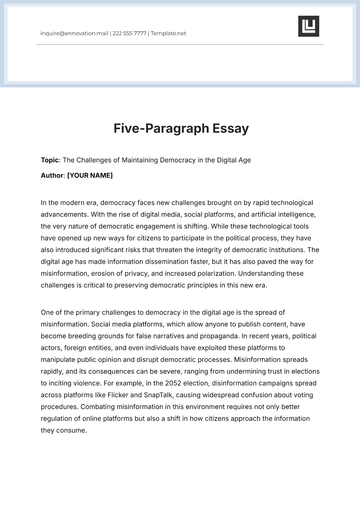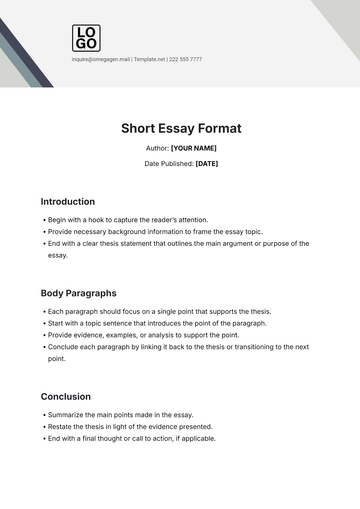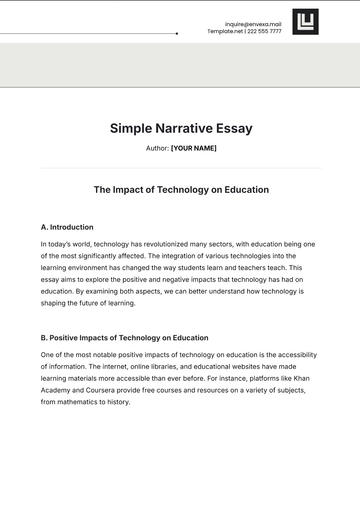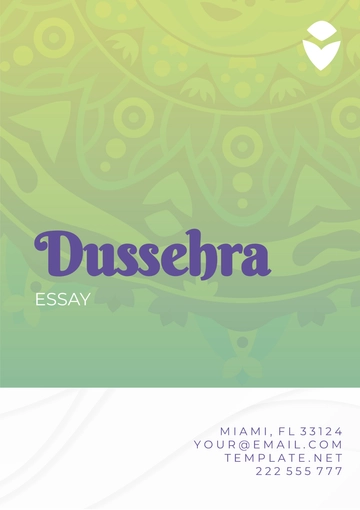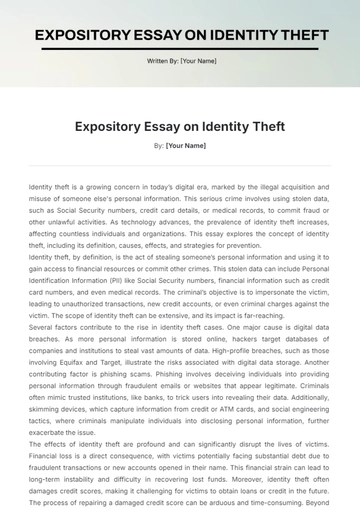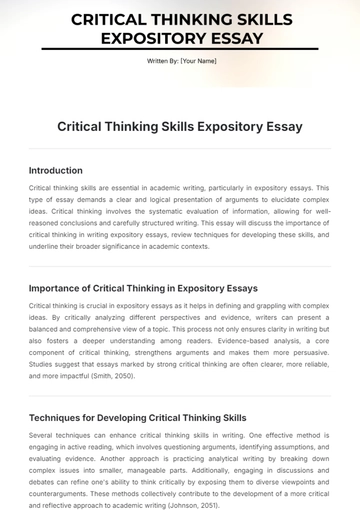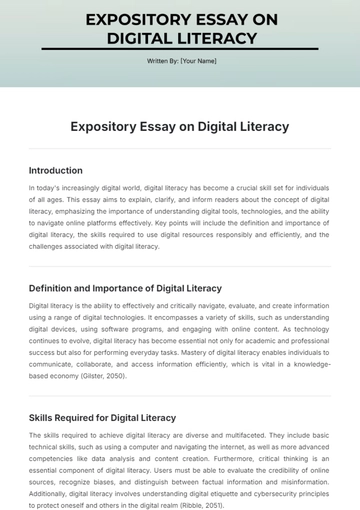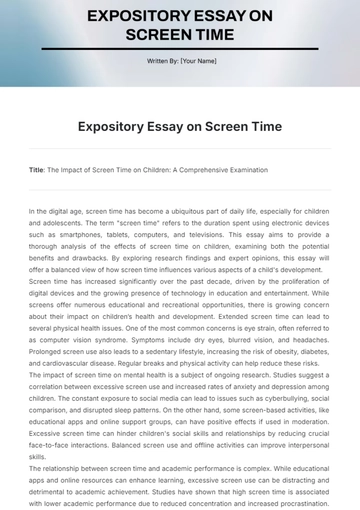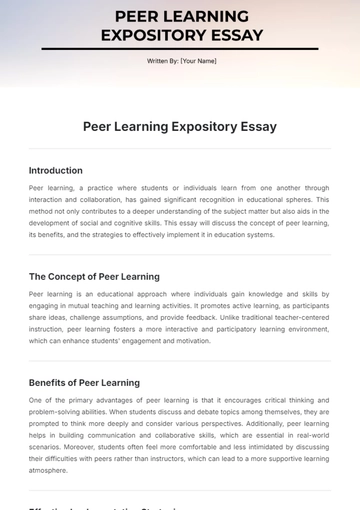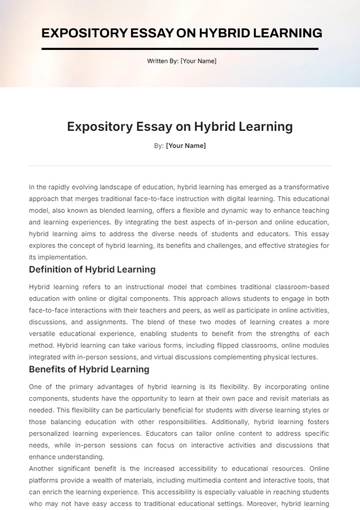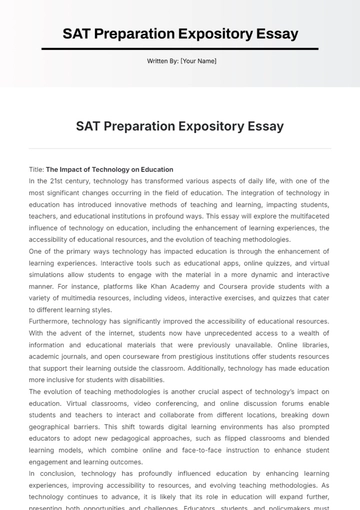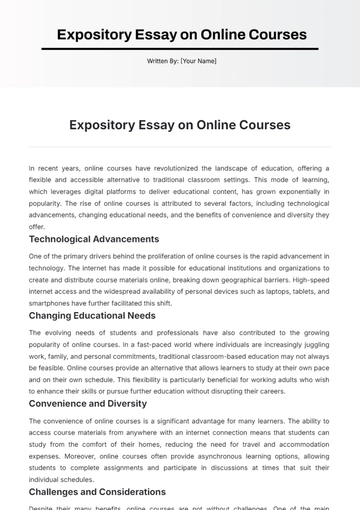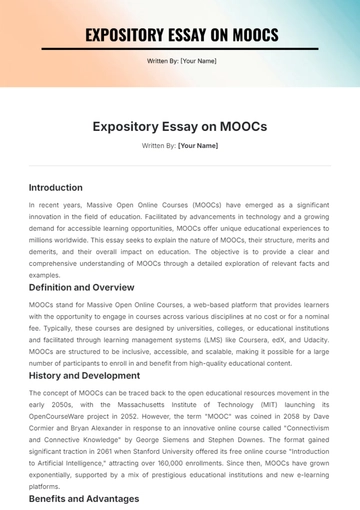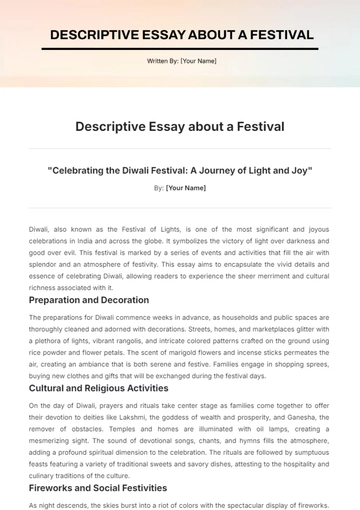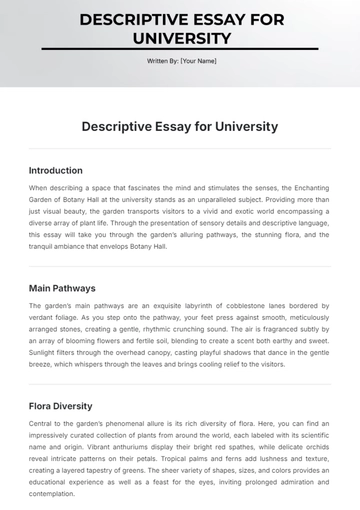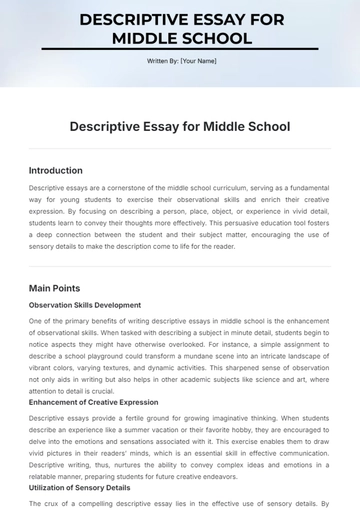Free History and Traditions of Holi Essay
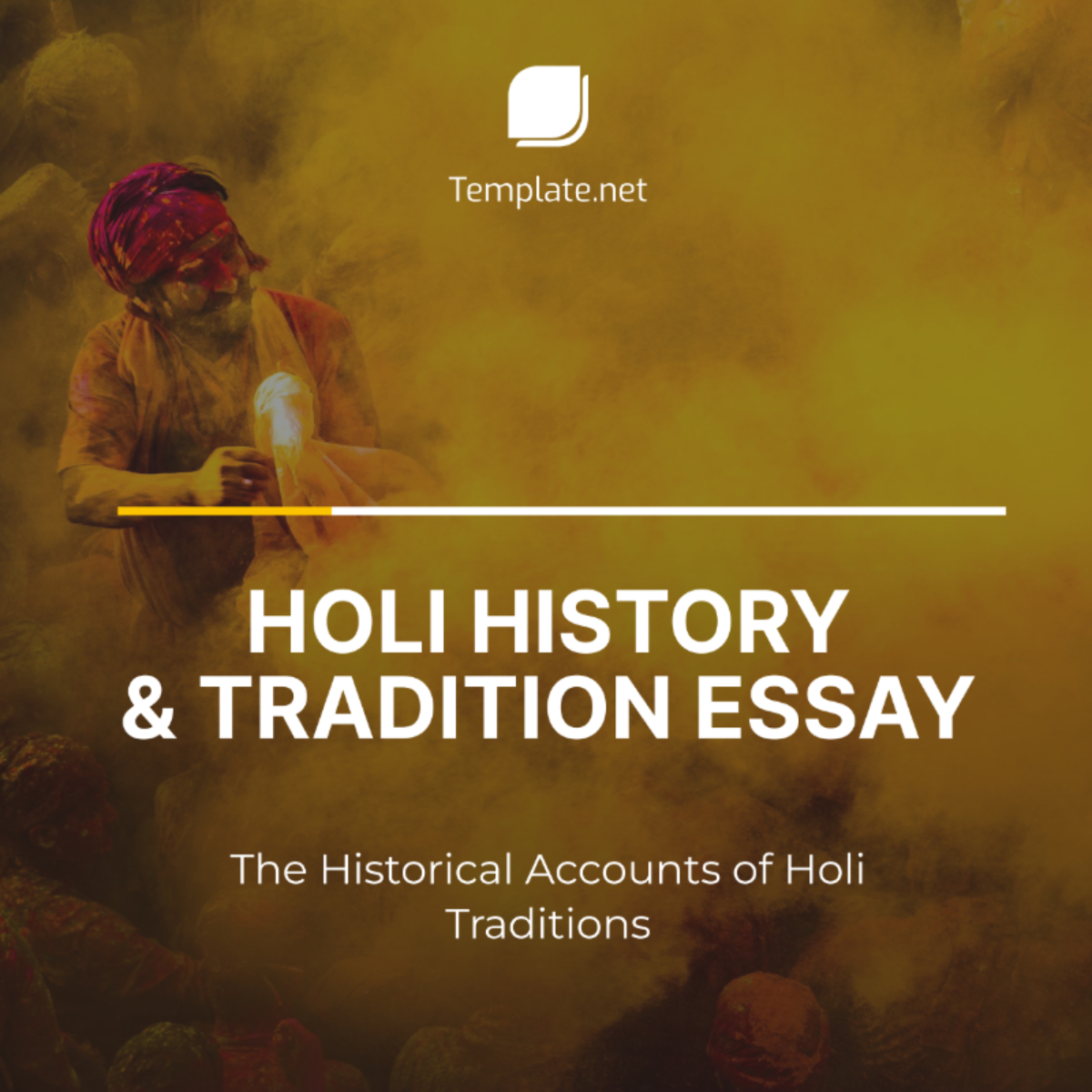
[Your Name]
[Your Professor's Name]
[Your Course Name]
March 1, 2050
The Vibrant Mosaic: A Historical Exploration of Holi Traditions
The ushering of spring brings the onset of blooming flowers, fresh harvest, and the radiant boisterous festival known as Holi. Known as the 'Festival of Colors,' Holi stands as one of India's most exuberant festivals, piercing the duality of social norms and cultural boundaries. The festivities bring to life the metaphorical melting pot of Indian tradition, laced with history and legends, and accentuated with a colorful explosion. This essay delves deep into the origins and traditions of Holi, tracing its historical journey and exploring its societal implications today, underlining its role in bridging gaps between the past and the present.
Holi's historical roots are deeply ingrained in Hindu mythology and religious texts, particularly the legend of the demonic king Hiranyakashipu and his son Prahlada. Hiranyakashipu, unable to tolerate Prahlada’s devotion to Lord Vishnu, persuaded his sister Holika to enter a fiery pit with Prahlada. Holika, who had immunity against fire, perished, while Prahlada emerged unscathed. This tale signifies the triumph of good over evil, and the bonfires lit during Holi commemorate this victory. The 'Holika Dahan' ritual, performed the night prior to Holi, symbolizes the purification of the soul by burning its evils and negativity.
The festival's vibrant colors, on the other hand, trace back to the love-filled saga of Lord Krishna and Radha, where Krishna playfully smeared Radha and her companions, the 'Gopis,' with colors. To this day, the same tantalizingly merry ambiance is reenacted in Vrindavan and Mathura, Lord Krishna’s birthplace.
Over time, Holi has evolved and assimilated various cultural and regional flavors, turning it into an expansive canvas of diversity. Every part of India celebrates it with a localized charm, from the boisterous 'Lathmar Holi' in Uttar Pradesh, where women chase away men with sticks, to the royal 'Holi of Flowers' in Rajasthan's Udaipur palace. The throwing of colored powders, the 'Gulal,' and the splash of colored water, replaced nowadays by environmentally friendly dyes, enhance the joyous spirit of Holi, while dances, songs, and sumptuous food further embellish this festive tapestry.
The festival splashes society with its egalitarian hues, transcending boundaries of caste, creed, gender, and social status. Holi breaks the manacles of societal norms and provides a platform for all strata to engage in a harmonious celebration. It is a day of liberty where societal rules blur, and fellow humans indulge in fun and frolic, irrespective of their backgrounds.
In conclusion, Holi is a vibrant embodiment of Indian tradition and cultural history. It resonates with the essence of unity, joy, and the indomitable spirit of good over evil. The festival's incredible region-wide variations showcase the country's rich diversity while reflecting the cohesion among its people. By bridging gaps between the past and the present, Holi fosters social unity and harmony, invigorating the societal fabric and painting the world with its kaleidoscope of colors.
References
Pauwels, H. (2011). The Goddess as Role Model: Sita and Radha in Scripture and on Screen. In F. Clooney (Ed.), Divine Mother, Blessed Mother: Hindu Goddesses and the Virgin Mary (pp. 49-72). Oxford University Press.
Singh, K. (2017). Holi: A Cultural History. Oxford University Press.
Gupta, S. P. (2006). Festivals of India. Har-Anand Publications.
Dwyer, R. (2015). Holi in Banaras: Through the Lens of Cultural Change and Continuity. In J. Flügel & G. L. Tinios (Eds.), Holi: Celebrating the Hindu Festival of Colors (pp. 69-82). Thames & Hudson.
Williams, R. S. (2008). Indian Arts and Culture. McGraw-Hill.
- 100% Customizable, free editor
- Access 1 Million+ Templates, photo’s & graphics
- Download or share as a template
- Click and replace photos, graphics, text, backgrounds
- Resize, crop, AI write & more
- Access advanced editor
Explore the vibrant tapestry of Holi's past and present with Template.net's History and Traditions of Holi Essay Template. This editable and customizable resource unravels the cultural significance and evolution of this colorful festival. Tailor your insights effortlessly, as it's editable in our AI Editor Tool, ensuring seamless customization for your essay.

